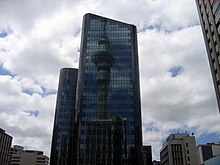
ANZ Bank New Zealand Limited is a New Zealand banking and financial services company, which operates as a subsidiary of Australia and New Zealand Banking Group Limited of Australia. ANZ is one of New Zealand's big four banks, and is the largest bank in New Zealand with approximately 30% of market share as of March 2021.

Lloyds Bank plc is a British retail and commercial bank with branches across England and Wales. It has traditionally been considered one of the "Big Four" clearing banks. Lloyds Bank is the largest retail bank in Britain, and has an extensive network of branches and ATMs in England and Wales and offers 24-hour telephone and online banking services.

The Australia and New Zealand Banking Group Limited (ANZ) is a multinational banking and financial services company headquartered in Melbourne, Victoria, Australia. It is Australia's second-largest bank by assets and fourth-largest bank by market capitalisation.

ANZ Fiji is the largest bank in Fiji and has about a 40% market share. ANZ Fiji currently operates 13 branches country-wide.
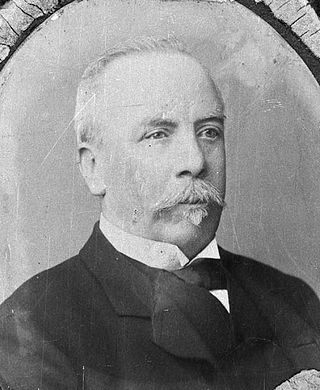
William James Mudie Larnach was a New Zealand businessman and politician. He is known for his extravagant incomplete house near Dunedin called Larnach's castle by his opponents and now known as Larnach Castle. He is also remembered for his suicide within parliament buildings when faced with bankruptcy and consequent loss of his seat in parliament.

The Port Chalmers Branch was the first railway line built in Otago, New Zealand, and linked the region's major city of Dunedin with the port in Port Chalmers. The line is still operational today.

The NZR E class of Double Fairlie steam locomotives were two different types of Fairlie steam locomotives, used on New Zealand's railway network.
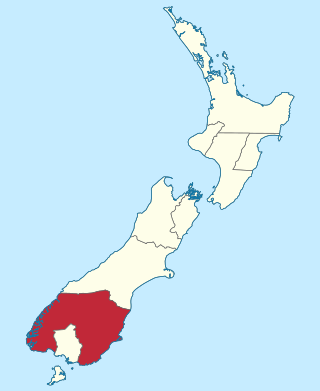
The Otago Province was a province of New Zealand until the abolition of provincial government in 1876. The capital of the province was Dunedin. Southland Province split from Otago in 1861, but became part of the province again in 1870.
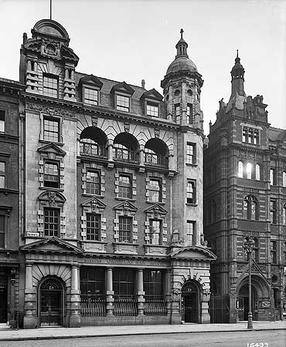
The historic overseas bank was established in London in 1828 as Leslie & Grindlay, agents and bankers to the British army and business community in India. Banking operations expanded to include the Indian subcontinent, the Middle East and elements of Africa and Southeast Asia. It was styled Grindlay, Christian & Matthews in 1839, Grindlay & Co from 1843, Grindlay & Co Ltd from 1924 and Grindlays Bank Ltd in 1947 until its merger with the National Bank of India.

John Bathgate was a New Zealand politician, and Minister of Justice and Commissioner of Stamps from 1872 to 1874.
Katrina Rore is a New Zealand international netball player. Rore is a previous captain of the New Zealand national netball team, the Silver Ferns, and plays for the Central Pulse in the ANZ Championship. Rore signed to the New South Wales swifts in the suncorp super netball league in the latter half of the 2018–2019 season following the netball World Cup.
Databank Systems Limited was the name of a not-for-profit "off balance sheet" company set up by a consortium of competing banks in New Zealand, to operate on what is nowadays termed a "Shared services Agency" basis, to provide computing resources for the consortium members. The company was set up in 1967, and in 12 years grew to be the largest non-Government data processing organisation in the Southern Hemisphere, servicing more than 1,200 banking offices.
Lloyds Bank International is a wholly owned subsidiary of Lloyds Bank Corporate Markets in the United Kingdom, which is in turn part of Lloyds Banking Group, one of the largest banking groups in Europe.
Murray Roberts & Co Limited owned a stock and station agency in New Zealand. For a time, it was New Zealand's largest wool exporter. Its business began in Green Island, Dunedin as a fellmongery owned by the Melbourne partners. Under direction of young John Roberts from 1867, it made very substantial investments in rural property in Otago and Hawke's Bay and spread as a stock and station agency through Otago and Southland and the lower half of the North Island.
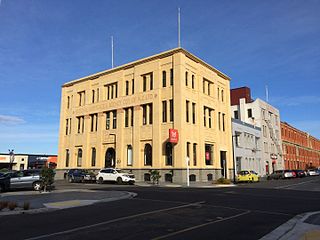
National Mortgage and Agency Company of New Zealand Limited owned a nationwide stock and station agency business originally intended to invest directly in New Zealand pastoral activities and lend to other participants in that industry. By the 1960s as well as the export of wool and meat and dealing in livestock it provided grain and seed merchandising, wholesale grocery services including wines and spirits and arrangement of property and other real estate sales.

Alexander Kerr F.R.G.S. was a Scottish banker who was the first manager for the Bank of New Zealand.
Gina Crampton is a New Zealand netball international. She was a member of the New Zealand teams that won the 2019 Netball World Cup and the 2021 Constellation Cup. Crampton was also a member of the Southern Steel teams that won the 2017 and 2018 ANZ Premierships. She was named the 2016 New Zealand ANZ Championship Player of the Year and the 2019 ANZ Premiership Player of the Year. Crampton has captained both Southern Steel and New Zealand. Since 2021 she has played for Northern Stars.
The Colonial Bank of New Zealand was a trading bank headquartered in Dunedin, New Zealand which operated independently for more than 20 years. A public company listed on the local stock exchanges it was owned and controlled by New Zealand entrepreneurs and not London or Australian bankers. Still subject to the same vicissitudes as its fellow colonial banks it was bought by the Bank of New Zealand in 1895.
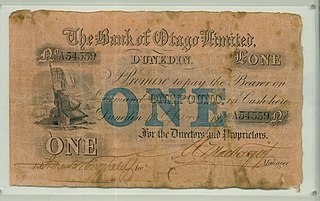
The Bank of Otago was a bank which successfully operated in New Zealand's Otago province from late 1863 until it was bought in 1873 by a new London incorporation, The National Bank of New Zealand, also run from Dunedin but endowed with many times more capital and plans to operate nationwide.
The history of the banking sector in New Zealand dates back to the early days of European settlement in the country. Over the years, the banking industry has played a vital role in supporting economic growth and development, providing financial services to individuals, businesses, and the government. This article explores the significant milestones and transformations in the history of the New Zealand banking sector.


